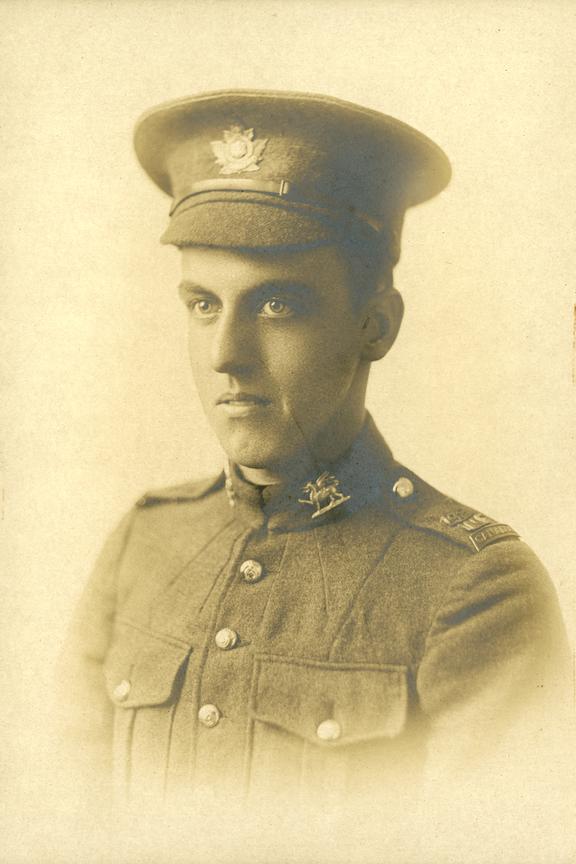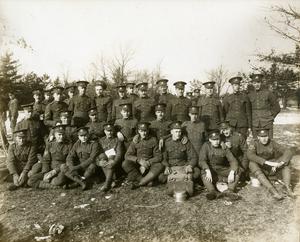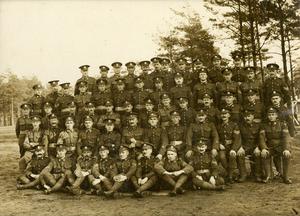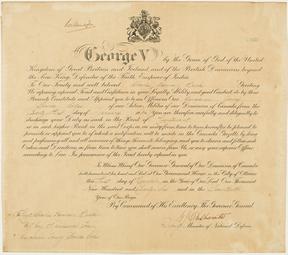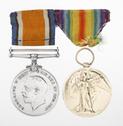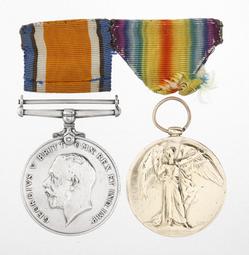Unit
20th Canadian Infantry Battalion (Central Ontario)
Branch
Infantry
Service Component
Canadian Expeditionary Force
Service Number
916623
birth
1895/08/31
Toronto, Ontario, Canada
death
1973/09/17
Manotick, Ontario, Canada
grave
Georgetown Cemetery, Halton, Ontario
Gender
Male
Charles Henry Buck was born in the Toronto area 31 August 1895 to John Frederick and Marion (nee Bell) Buck. His father, a laborer had been born in Hamburg, Germany and emigrated to Canada as a child. According to family records Buck had two brothers and four sisters. By 1911 he moved out and lived as a boarder in Coburg, Ontario, working as a laborer also preparing to qualify a draughtsman/architect. However by the time he enlisted in the Canadian Expeditionary Force (CEF) he was living with his parents on Canlaw Avenue in Toronto and working as an architect.
He appears to have enlisted several times though his file only dates his service from his last enlistment. According to one medical case sheet he had enlisted in October 1915 with the Queens Own Rifles and went to the United Kingdom where he suffered weakness which was diagnosed as resulting from a hernia suffered during an appendix operation as a child. He was returned to Canada and discharged as medically unfit. Another record of a medical board in Kingston, Ontario, noted he had enlisted again 10 April 1916 with the Royal Canadian Horse Artillery and recommending his immediate discharge on the same grounds. However, Buck enlisted again in Toronto 27 April 1916 in the 198th Canadian Infantry Battalion (Canadian Buffs) which had been recruiting from the Queens Own Rifles in the winter of 1915/16. Buck sailed with the unit which left Halifax 25 March 1917 arriving in Liverpool 10 days later. On arrival his prior service seemed to stand him in good stead as he was immediately made a Lance Sergeant. Three months later he was made Company Sergeant Major with his unit, now at the Whitley Camp and promoted to Warrant Officer (2nd Class). He was sent on a Drill course in January 1918. However, in March he reverted to Acting Sergeant to deploy overseas and joined his field unit, the 20th Canadian Infantry Battalion (Central Ontario) at the Canadian Corps Reinforcement Depot in France. Within two months however, he was hospitalized, first with No. 6 Canadian Field Ambulance, and by 11 May 1918, with the 1st Australian General Hospital. Three days later he was back in the United Kingdom at the Canadian Special Hospital at Lenham diagnosed with tuberculosis lesions in his lungs which were causing weakness and high pulse rate. On 20 September 1918 he was repatriated to Canada aboard HM Hospital Ship Neuralia and sent to the Canadian Military Hospital in Sarnia. His condition did not appear to be serious but a medical board found him unfit for service and he was discharged 21 November 1918.
Upon discharge he went to live with his parents in Toronto and quickly got married to a teacher, Jessie Irene Anderson 24 November 1919 and in the 1921 Canadian Census was living with her on Hunter St in Toronto and working as an architect. There are few public records of his post military life but according to his family notes, he maintained his relationship with his unit, serving as a Vice President of the Canadian Buffs Association in 1924/5. He gained employment with the Federal Government in the Department of Indian Affairs and moved to the Ottawa area in 1939. During the Second World War he joined the Royal Canadian Army Service Corps gaining the rank of Major. His wife died in 1954 and he subsequently remarried to Ivy MacKoy and retired in the Manotick area near Ottawa, Ontario where he died 17 September 1973. His family notes that he is buried in the Georgetown cemetery near Halton, Ontario.

